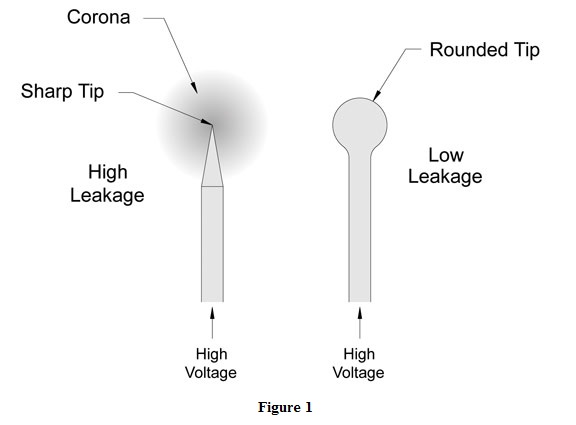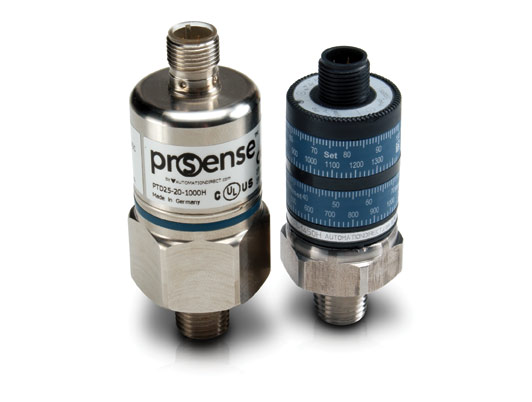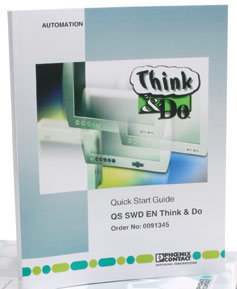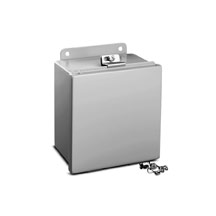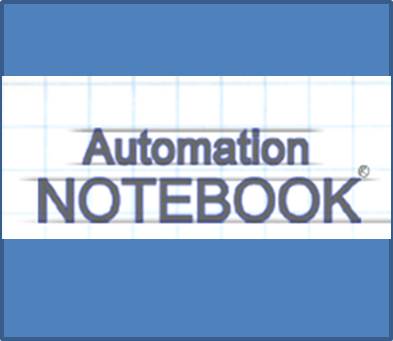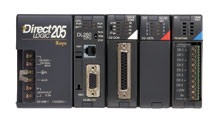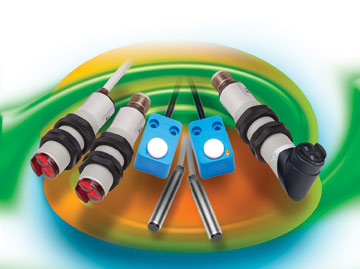Corona discharge happens when a conductor is forced to carry more electrons than it can accommodate. In these instances, the electrons jump to the air where they flow to any neutralizing charge that they may find. Near the conductor, the electrons have sufficient energies to ionize the air and force it to glow or, in…
+Tech TopicsAutomation NotebookFYIIssue 11 – 2008Learning ResourcesNotebook IssueProcess Sensing & ControlProduct
ProSense Q&A
When selecting a pressure sensor, what factors should I consider? There are three primary considerations when selecting a pressure sensor; pressure values the system will have, temperature of the process material and the compatibility of the sensor with the process fluid. System pressure values – the normal working pressure should be below the maximum range of…
+Tech TopicsAutomation NotebookIssue 11 – 2008Learning ResourcesNotebook IssueOperator InterfacePLC SpeakingProductProgrammable Control
What About PC Control?
Control fads have come and control fads have gone, but through it all Programmable Logic Controllers (PLCs) have withstood the test of time. However, there are times when the basic ladder logic programmed PLC is not the best answer to your control solution. Enter PC-based control … PC-Based Control PC-based control (application control from a…
+Tech TopicsAutomation NotebookEnclosures & AccessoriesIssue 11 – 2008Learning ResourcesNotebook IssueProductTechnical Review
What Do The NEMA Ratings Mean?
NEMA Ratings for Enclosures This article defines of some NEMA Ratings for enclosures that are used in industrial settings. Along with a description clarifying what each NEMA rating actually means, is an explanation on what the enclosures are typically used for. NEMA 1 NEMA 1 enclosures are typically used for protecting controls and terminations from…
+Tech TopicsAutomation NotebookIssue 8 – 2007Learning ResourcesMotion ControlNotebook IssueProductTech Thread
FAQs for SureServo AC Servo Drives
Since the release of the SureServo AC servo drives, we have compiled a list of questions that are frequently asked by our customers. The following are answers to some of those questions. What power voltages does the SureServo require? The SureServo requires 220 VAC single-phase to power the smaller drives and 3-phase for larger systems. There…
+Tech TopicsApplicationAutomation NotebookCover StoriesIssue 8 – 2007Learning ResourcesManufacturingNotebook Issue
Finding and Selecting a System Integrator
Successful automation projects depend on a number of factors, from process definition to system installation. The number of automation vendors, software components, hardware components, and related automation stuff is growing. As the products and product sets have become more complex, more end users are turning to system integrators to help them in product selection, development…
+Tech TopicsAutomation NotebookFYIIssue 9 – 2007Learning ResourcesNotebook IssueProductProgrammable Control
DL205 Frequently Asked Questions
Here are some of the more commonly asked questions pertaining to our DL205 family of PLCs. For a more complete list, go to the Technical Support page of our Web site. Question: Is the DL205 system expandable? Answer: PLC systems with a D2-250-1 or D2-260 CPU can be expanded using the D2-EM Expansion module and D2-CM…
+Tech TopicsAutomation NotebookIssue 9 – 2007Learning ResourcesNotebook IssueProductRelays & TimersTechnical Review
Electromechanical Relays Versus Solid-State: Each Has Its Place
Since the introduction of solid-state relays some decades ago, the debate over which is better, solidstate relays (SSRs) or electromechanical relays (EMRs), has gone on. The general answer is neither, as each one has good and bad points. But in terms of specific application requirements, clear winners emerge. The Argument for Solid-State Relays When used…
+Tech TopicsAutomation NotebookIssue 9 – 2007Learning ResourcesNotebook IssueProductProgrammable ControlTech Thread
Welcome PAC: Moving On To The Next Generation Controller
Log on to any industrial control discussion forum, and you will read passionate debates about the advantages and disadvantages of programmable logic controllers (PLCs) compared to PC-based control. Amongst the PLC/PC debates, there most likely were some threads discussing PACs, which begs the question, “What the heck is a PAC?” PAC, a new acronym, stands…
+Tech TopicsAutomation NotebookDiscrete SensingFYIIssue 7 – 2006Learning ResourcesNotebook IssueProduct
Sensors Frequently Asked Questions
AutomationDirect’s Technical Support Team has compiled a list of customer frequently asked questions for many of our products. The complete listing can be found on the technical support page of our Web site. Here are some of the more commonly asked questions regarding our sensors. 1. Q: How do inductive proximity sensors work? A: Inductive proximity…


